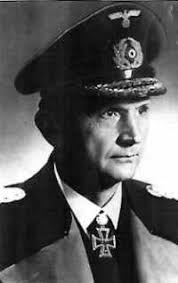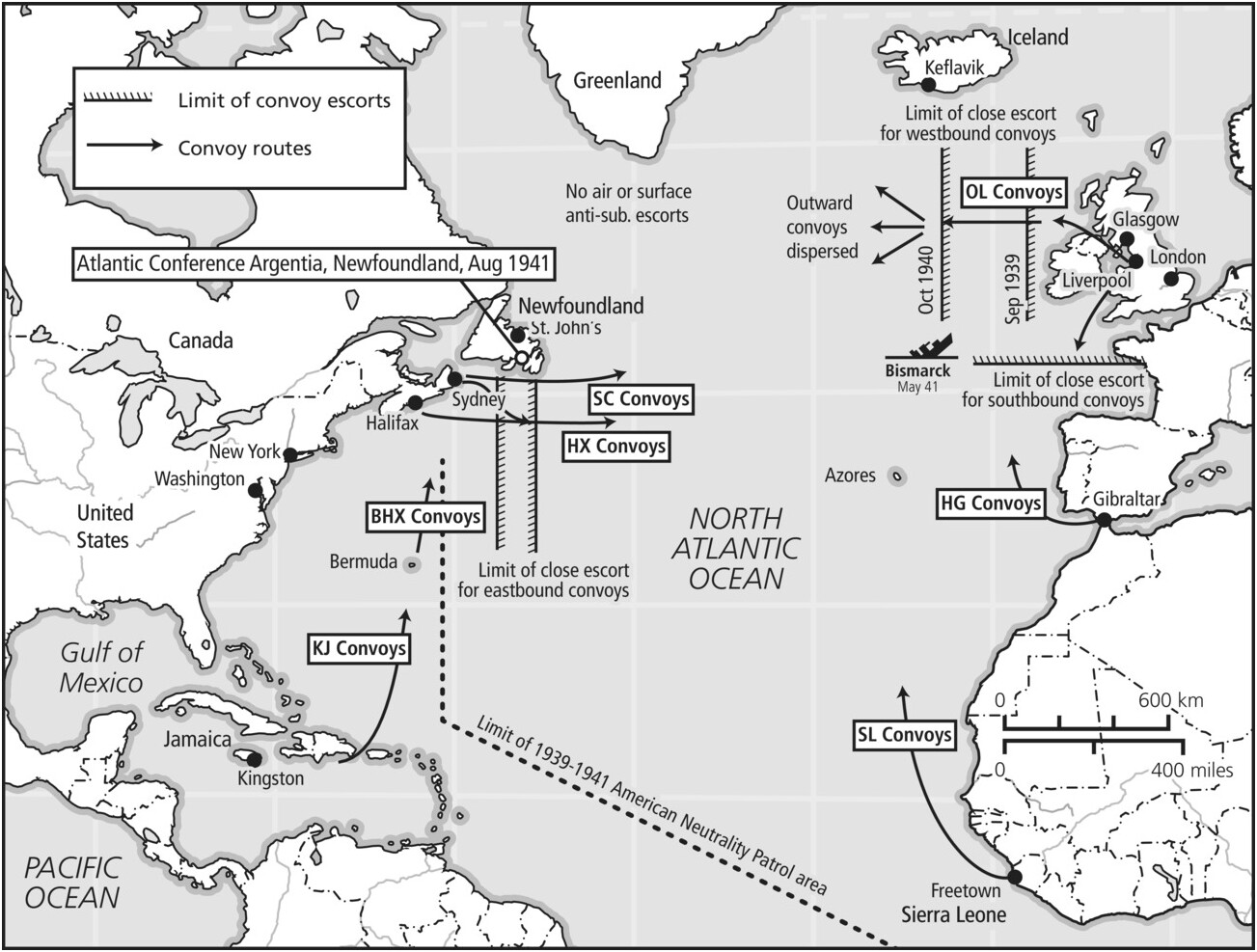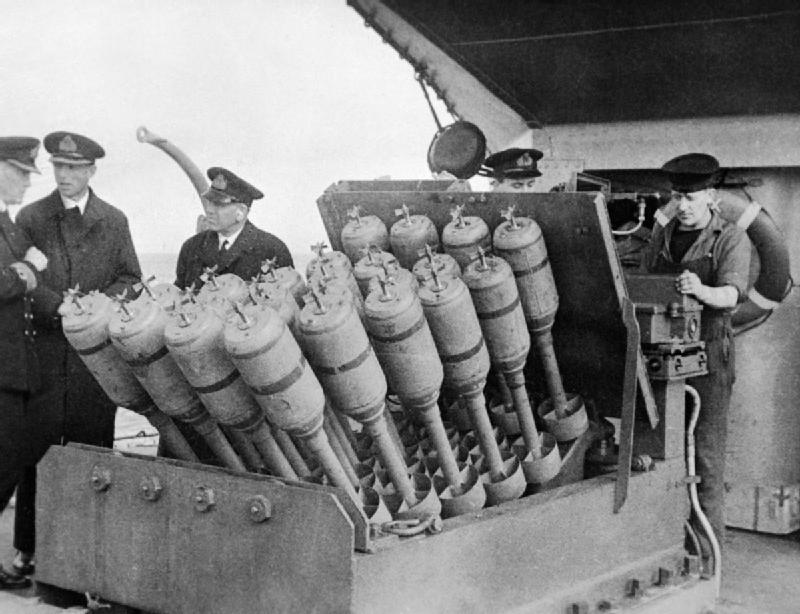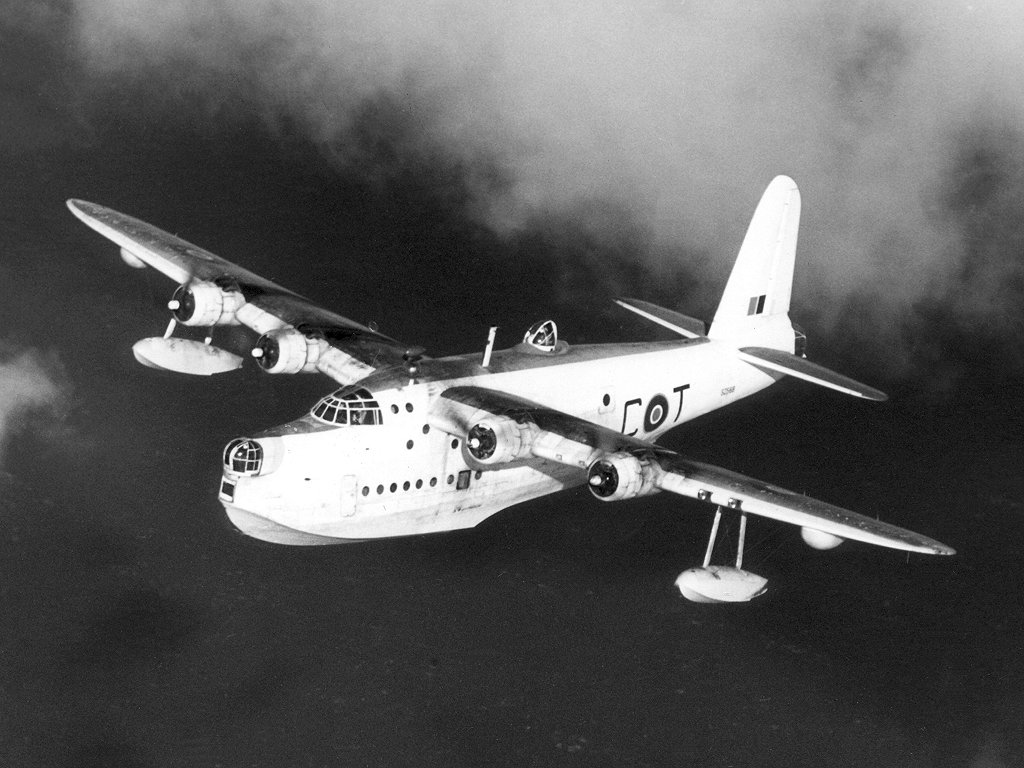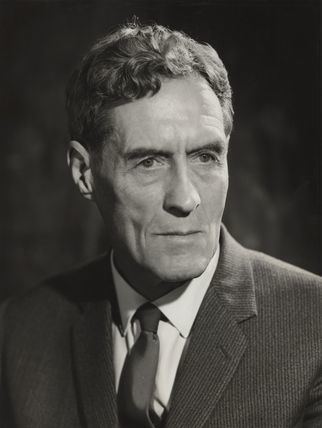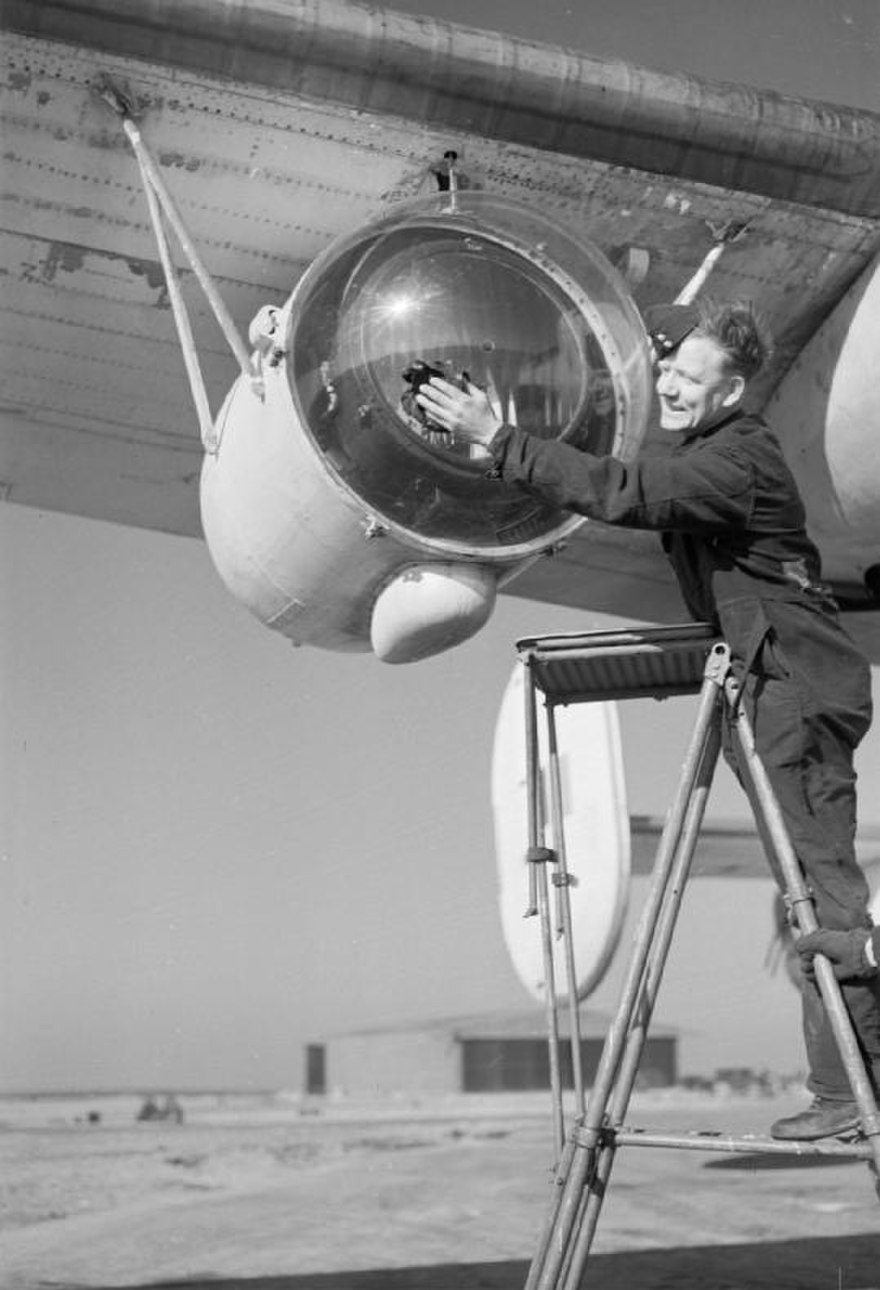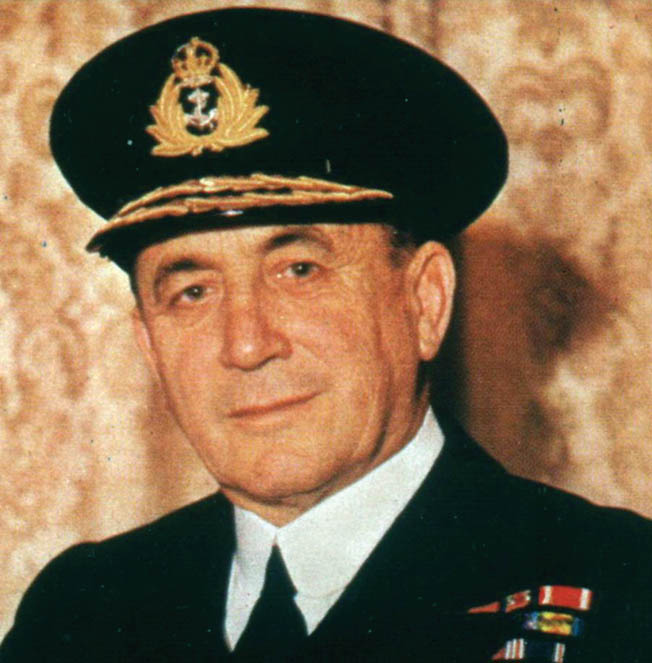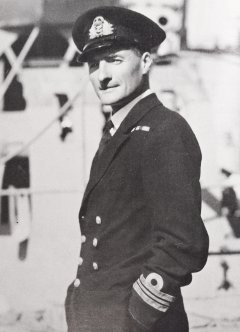The U-515 was not yet equipped with the newest operational torpedo type, FAT, for Federapparattorpedo (spring-operated torpedo). This weapon, also called the Geleitzugtorpedo (convoy torpedo) was a G7a (“Atofat”) or G7e (“Etofat”) fitted with a guidance system that caused it to take a direct course for a given range toward a convoy’s ship columns, then to turn right or left and describe a succession of long or short legs, or loops, the expectation being that a snaking, to-and-fro course through the columns would result in a random Treffer, or hit. FATs, which the British called “Curlies,” were still not common equipment in spring 1943. The U-515 would not receive FATs until her fourth cruise, beginning 29 August, when she would also carry another new torpedo type, introduced the previous February and March, the acoustic anti-escort T-V, G7es, called Zaunkönig (wren), which was designed to home in on the cavitation noise (24.5 kHz) of an escort vessel’s propellers running at 10 to 18 knots. This type, which was even rarer than the FAT on U-boats at sea in spring 1943, would have its first success in combat in September.
Most of the officers and crew who launched U-515’s eels had served together since the boat was commissioned. In that respect they were unlike the typical crew, some of whose enlisted members normally transferred out of a boat following two patrols in order to take the classwork and training required to qualify them for a new specialty, higher grade, or both, after which they would be assigned to different boats. Somehow, Kptlt. Henke had avoided that rotation, with the result that he commanded an unusually high number of experienced twenty-two-year-olds at a time when the average age of non-petty officer crewmen was a year or two younger. Furthermore, at the date of commissioning, Henke had inherited a cadre of petty officers (23 years old and older) who had had prior experience on Type IX boats.
This veteran crew, most of them U-boat volunteers, was motivated, we may believe, not only by the usual inducements of proud service in an elite arm; education in the latest technology, specially high pay rates, including combat patrol bonuses; the best rations to be found in any of the German services; generous leaves; and the near-certainty of medals, including Iron Crosses first and second class; they were also motivated by the success of their Commander in sinking ships, for that was the particularly energizing tonic on a U-boat. Many negative distractions could be set aside, for example, lack of promotion opportunities because of the crew’s continuity of service on this particular boat, Henke’s sometimes severe disciplinary responses to minor crew infractions, or the festering personality conflict between the Chief Engineer and his senior engine room machinist—all of that mattered little if the boat was going from success to success with her torpedoes. When, at last, U-515 succumbed to U.S. Navy destroyers on 9 April 1944, American interrogations of her survivors disclosed that even at that date, when the Atlantic war was long before lost, morale aboard U-515 remained high.
The thirty-three-year-old man who commanded Fünffünfzehn (515) was one of the most enigmatic and troubled Commanders in the U-Bootwaffe. Hardly the one-dimensional German type, he was an amalgam of conflicting traits. On the one hand impetuous, even hotheaded, in his performance of duty he was the model of professional cool. Uncomfortable under naval discipline himself, he was quick and rigorous in imposing it on others. Outgoing and gregarious by nature, he was viewed by his fellow officers as a vainglorious loner. Respectful of the Nazi state, which, among other things, punished Germans who listened to American popular music, he loved jazz and kept an impressive collection of Cole Porter songs on phonograph records. In stature he was five feet nine inches in height, 175 pounds. Good-looking, blueeyed, he was always the impeccably attired schöner Henke—“Handsome Henke.”
Disciplinary problems dogged the young officer during a career which, from his entrance into the Navy as an officer cadet in 1934 up to the outbreak of war, was spent mainly on shore assignments, except for two tours amounting to fourteen months on the pocket battleship Admiral Scheer. In March 1940, he was ordered to the U-Boat School (U-Schule) at Pillau, East Prussia (now Baltiysk, Russia). Pausing in transit at Berlin to visit a girlfriend, Henke ended up late on arrival— Absent Without Leave—by two days. Though the AWOL charge resulted from a misunderstanding of his due date, he was court-martialed and sent to duty with a punishment company. Finally allowed to complete his studies, he was assigned in November 1940 as a Second Watch Officer (Zweiter Wachoffizier, or II.W.O.) to the Type IXB U-124, based at the newly occupied port of Lorient on the Brittany coast of France. It was there that he learned that because of his spotty disciplinary record, he had lost all seniority and would have to rebuild his career from the bottom.
In four patrols on U-124, during which he advanced to First Watch Officer (I.W.O.), Henke not only redeemed his reputation but proved himself an excellent candidate for Commander’s School at Danzig (now Gdansk, Poland), to which he was assigned in November 1941. Following two months of intensive instruction in command responsibilities, simulated attack procedures, and the newest torpedo technology, Henke reported to the Deutsche Werft yards in Hamburg-Finkenwerder to assemble his crew and take command of U—575. The successes achieved during his first two command patrols with the new IXC earned him restoration of his seniority on the career list, promotion to Kapitänleutnant (Lieutenant), and the award of Germany’s highest decoration, Knight’s Cross of the Iron Cross. He was the seventieth U-boat officer to win the coveted Ritterkreuz.
Henke, his crew, his boat, and his torpedoes were fully primed for the steamy equatorial night of 30 April/1 May off West Africa.
On 13 April, after finding little else off Dakar besides Bamako, which he sank on the 9th, Henke steamed southeast past Portuguese Guinea (now Guinea Bissau) to take up a new position southwest of the busy port of Freetown, in Sierra Leone, which he reached on the 16th. But for nine days after that date, no ship traffic appeared either shoreward or seaward—a “sour-pickle time.” Nor did the conning tower bridge lookouts sight so much as an aircraft during that same period. Then, on the 25th, two British Royal Air Force (RAF) Short Sunderland flying boats came into view. Two days later, lookouts sighted a merchant vessel’s smoke, but another flying boat, this time a RAF PBY-5 Catalina flying boat, of American design and manufacture, forced the boat to dive and fall behind the contact. Better luck, it seemed, came in the late morning of the 28th, while U-515 was submerged to avoid possible morning air reconnaissance. The hydrophone (Gruppenhorchgerät, or GHG), which was an underwater passive sound detection device, picked up the sound of explosions from two series of depth charges, as well as the swish-swish-swish of warship propellers. Henke came to periscope depth and made an observation of one “London” type cruiser, four destroyers, and two passenger ships, which he assumed were filled with troops, steaming on a course of 340° (toward the northwest) at 12 knots.
Since it was daylight, he decided to make a submerged attack. The range was 5,000 meters. That would be a stretch for his Eto wakeless eels, but Henke ordered a double fan-launch (2er Fächer) from forward Tubes I and IV, with depths set to 3 and 5 meters. Both eels missed and, after eight minutes, detonated at the ends of their runs. The sourpickle time continued. And, on the 29th, U-515 had the unpleasant experience of being surprised by an RAF Catalina that dived on the boat out of dark cloud cover. The 20mm anti-aircraft gun abaft U-515’s tower gave a good account of itself with about ten hits on the Catalina, which, thrown off its stride, dropped five depth bombs harmlessly astern. After which—ALAARMM!—the boat dived, as it would have to do twice more that evening when probing Catalinas came again.
Daytime on the 30th passed uneventfully. The morning was spent submerged. Crew members who were not asleep went about their usual duties, tending to the Eto mechanisms, checking the battery arrays for chlorine gas buildup, monitoring the wireless telegraph (W/T) receivers and hydrophone, oiling the rocker-arm hinges on the nine cylinder MAN diesels, filling out report forms, studying for qualifying exams, cooking the midday meal, or shaving—Henke was one of the few commanders who forbade beards. No man wore more than shorts because the tropical temperature inside the boat exceeded 100 degrees Fahrenheit.
At 1345 German Summer Time (GST), which all boats observed no matter what their position at sea, and which was two hours ahead of Greenwich Mean Time (GMT), U—515 blew tanks and surfaced to air out the noxious and foul-smelling interior. The lookouts searched the ocean’s edge for smoke plumes, but there were none. After fifteen minutes, the boat resumed an underwater listening station, until 2041, when Henke ordered the boat surfaced again so that he and the bridge watch could survey the horizon in the day’s last light. Twenty-one minutes later, a lookout seized like a bird dog and exclaimed, “Herr Kaleu!” the diminutive of Henke’s rank. Following the lookout’s point, Henke drew into the lenses of his Carl Zeiss 7 x 50 binoculars the murky images of smoke clouds where the ocean met the sky shoreward to the southeast. He estimated the smoke at range 15 nautical miles, bearing 145°. Gradually, the images sharpened and mast tops became visible, then funnels and bridge screens. Henke counted fourteen large, fully laden merchant ships in convoy, average tonnage 6,000–7,000 GRT, proceeding northwest, guarded by what appeared to be three destroyers and five other escort vessels. Actually, the convoy, designated TS.37, was composed of eighteen merchant vessels protected by only three escorts, the smallest in the Royal Navy’s inventory: the corvette H.M.S. Bellwort and two trawlers. The convoy’s five columns had originally included a nineteenth merchant ship, but two days before she had left the formation to proceed independently, accompanied by a third trawler.
Destined for Freetown, the convoy had originated on 26 April a short distance to the east-southeast, at Takoradi, on the Gold Coast (today’s Ghana). The run between those two ports had been made many times without losses: only eight ships sunk out of 743 sailing since September 1941. It was hoped by the British Admiralty’s Flag Officer Commanding West Africa, headquartered at Freetown, that RAF overflights along the route would be a sufficient supplement to the small Royal Navy (hereafter RN) surface escort to deter U-boat attacks. The aircraft available for that purpose were one Hudson (an American Lockheed passenger plane converted to bomber) squadron and two Sunderland flying boat squadrons operating from Bathurst (Banjul, Gambia), one Catalina squadron at Freetown, and a half-squadron of Wellington bombers at Takoradi, with detachments of Hudsons at Port-Étienne (Nouâdhibou, Mauritania) and Lagos, Nigeria.
There were two sea/air escort failures, however. An interception of a W/T (radio) transmission in Morse code from Henke’s boat was made by the Senior Officer, Escort, but that fact (not the message itself, which was unknown because it was encrypted) was not forwarded or relayed directly to Headquarters, Flag Officer, with the result that three destroyers at Freetown that might have been sent out at once to reinforce the escort did not sortie until it was too late. Furthermore, at 1820 GST (1620 GMT), which was two hours and fifty-one minutes before civil twilight in the area, the one aircraft assigned to dusk patrol over TS.37 ran into line squalls and electrical storms that forced it to leave the argosy and return to base. The continuing bad weather, combined with an absence of moonlight, caused the RAF to scratch a planned all-night escort. As a consequence, by nightfall Convoy TS.37 was near-naked to its enemy.
The night was black with flashing sheet lightning across the horizons. The sky was overcast with heavy rain squalls, but visibility was good. There was a moderate sea with swell and a light westerly wind, force 3–4 on the Beaufort scale. As Henke advanced to his work, a radar detection device on board (Funkmessbeobachter [FuMB], or “Metox,” after the name of the first French firm, based in Paris, to manufacture the equipment) sounded a high-pitched alert tone through the U-boat’s loudspeaker system. Metric radar pulses from one or more surface escorts not yet equipped with 10-centimeter radar (which was outside the FuMB’s frequency range) were searching for an enemy signature. Henke continued his advance regardless and, after two hours and fifty-four minutes, still on the surface, passed under the cover of a rain squall into the rear of the convoy columns.
When he had proceeded forward as far as the convoy center without having been sighted, and there took up a position, at steerageway (the minimum speed required for helm to have effect), canted northeast across the convoy’s base course, his First Watch Officer (I.W.O.) Oblt.z.S. Ernst Sauerberg brought up to the conning tower bridge the UZO (U-boot-Zieloptik), target-aiming binoculars with fourteen-inch barrels, and attached them to the rotating UZO post bracket. With these 7 X 50 lenses, reticle-etched for degrees of elevation and deflection, the I.W.O. obtained bearing, range, and angle-on-the-bow for a Mehrfach, or multiple launch, against two target ships in one of the port columns astern and transmitted the data to the Siemens-made deflection calculator (Vorhaltrechner) manned by the Second Watch Officer (II.W.O.), Leutnant Heinrich Niemeyer, in the tower below. Meanwhile, the aft torpedo room crew opened the exterior caps of Tubes V and VI, to flood them for launch.
When the aim-off heading had been established by the calculator and transmitted to the guidance systems of the two stern torpedoes, and a depth of five meters, as decided by the I.W.O., had been hand-cranked into the eels by the torpedo room crew, Henke gave permission to launch. At 2256 GST the I.W.O. shouted Los! and hit the electromechanical launch button. PISSSHH! PISSSHH! Blasts of compressed air 1.2 seconds apart sent the two eels seaward and, 0.4 seconds after launch, the warheads activated and rudder vanes, directed by inboard gyro compasses, began to steer the warheads toward their targets. Simultaneously, Henke began counting the seconds from launch on his stopwatch; the aft torpedo room ratings vented the excess air inboard to prevent exterior surface bubbles; in the Control Room (Zentrale) the Chief Engineering Officer (Leitender Ingenieur, or L.I.) began taking water into the stern regulator tanks to compensate for the lost weight on board of the two eels; the sound man reported the torpedo runs as hot, straight, and normal; and the I.W.O. began setting up aiming triangles for four target ships forward in the convoy’s starboard columns. Henke’s war diary records:
First shot (Schuß) at 2256 from Tube V at a 6,000 GRT freighter, bows left bearing 70°. After a running time of 58 seconds, the torpedo hit amidships causing the ship to sink immediately.
Second shot at 2256 from Tube VI at a 7,000 GRT tanker, bows left bearing 6o°. After a running time of 59 seconds, the torpedo hit abaft the bridge, breaking the ship apart. The crew sent up white rockets and went quickly into lifeboats. We observed the sinking.
One minute after the first launches, the I.W.O. and deflection calculator had a trigonometric solution for a torpedo in the bow tubes. Again, Henke’s KTB:
Third shot at 2257 from Tube I at a 6,000 GRT freighter, bows left bearing 80°. After a running time of 51 seconds, the torpedo hit amidships and the vessel sank quickly.
Within the next four minutes, the I.W.O. would have aiming triangles for three more ships:
Fourth shot at 2258 from Tube IV at a 7,000 GRT freighter, bows left bearing 8o°. After a running time of 52 seconds, the torpedo hit amidships and the vessel burst apart.
Fifth shot at 2259 from Tube II at a 5,000 GRT freighter. After a running time of 60 seconds, the torpedo hit amidships and the vessel sank immediately.
Sixth shot at 2301 from Tube III at a 6,000 GRT freighter. After a running time of about 90 seconds we heard a [magnetic exploder] hit at 10 meters depth, and we thoroughly believe the ship sank.
White rockets signaling Hit By Torpedo went up in the dark night, to be joined by brilliant starshell illuminants fired by the convoy’s tiny escort in an attempt to sight the surfaced U-boat. In the same light Henke’s lookouts descried a small patrol vessel and a “destroyer” to port, and then, to starboard, another “destroyer” coming at them bows-on! Henke ordered an Alarm dive to 170 meters (562 feet). Depth charges dropped by what must have been the corvette Bellwort exploded a fair distance away. In the U-boat’s sound room the hydrophone operator heard the noises made by bursting bulkheads in the sinking ships. The torpedo crews reloaded three Etos.
Henke erred in stating that he had scored six hits and had observed five sinkings. Both his stern shots missed, despite his observations. But the rapid fusillade from his boat did result in four starboard column ships being hit, all of which would sink. First to take a torpedo was the motor ship Kota Tjandi, a 7,295 GRT Dutch vessel in British service sailing from Haifa, Table Bay, and Takoradi for Freetown and the United Kingdom. Hit on the port side, as were the three victims to follow, this ship carried 7,453 tons of general cargo, including potash, rubber waste, and 1,000 tons of tea. Of her crew of 91 plus eight Navy and Army gunners, six men were lost.
The second vessel, struck on the starboard hand of Kota Tjandi, was the British freighter Nagina, 6,551 GRT, carrying a general cargo of 4,886 tons that included 2,750 tons of pig iron. Her crew numbered 103, including eight Navy and two Army gunners. Next hit was the British steamer Bandar Shahpour, 5,236 GRT, sailing from Abadan, Mormugao, and Takoradi for Freetown and the U.K., with 6,768 tons of general cargo, including 3,000 tons of manganese ore, together with oil seeds, rubber, copra, and 2,002 bags of mail. Her crew, with four Navy and four Army gunners, numbered 62. She carried eight passengers: two women, one child, and five Merchant Navy officers. The last victim was the British motor ship Corabella, 5,681 GRT, with a cargo of 8,035 tons of manganese ore. The crew, including six Navy and two Army gunners, who, like the gunners on the other torpedoed vessels, never got a shot off at their attacker, numbered forty-eight. The four ships were all hit within six and a half minutes, and all in or near the position 07°15’N, 13°49’W.
From the Masters of Nagina, Bandar Shahpour, and Corabella we learn what happened to the crews on board those three vessels (there being no report found from the Master or crew of Kota Tjandi). Captain W. Bird stated that Nagina sighted a single torpedo approaching the ship from abeam on the port side. Its warhead exploded loudly but without a flash between Nos. 1 and 2 holds in the vicinity of the ‘tween decks and threw up a large column of water that, when it fell, crushed the fore part of the bridge. The No. 2 lifeboat and a raft were destroyed by the blast, but little other damage could be seen in the very dark night. Immediately, the ship listed about 10° to port and Captain Bird ordered engines stopped. Three minutes after the explosion, when the list increased, Bird ordered Abandon Ship. The five running lifeboats were lowered, one of which capsized. Three rafts were also launched, Bird joining the last of them.
Everyone was clear of the ship within seven minutes of being torpedoed, and from their boats and rafts they watched the holed Nagina go down, bow first, at 2113 GMT. Bird’s raft, with ten aboard, was overloaded, with the result that when three other men in the water grabbed hold of its sides, the raft capsized. The survivors managed to get purchase on the raft again, and a quarter-hour later, No. 6 lifeboat rowed over and took the thirteen on board. At 2230, H.M. Trawler Birdlip, part of the convoy escort, rescued the occupants of that boat and those of No. 5 boat. Five more survivors were found by a destroyer from Freetown but not until 3 May, and No. 3 boat with its survivors was not found, by an aircraft and a motor launch, until 4 May. Notwithstanding the exposure suffered by these last two groups, casualties were light: the Second Wireless Operator was killed by the explosion and a Chinese carpenter was missing. To Admiralty authorities, Captain Bird complained: “I do not consider that this convoy was sufficiently protected. There were three destroyers lying in Freetown Harbour; the Naval authorities must have known that this convoy was passing through this dangerous area where submarines were known to be operating, yet these destroyers were not sent to our assistance.”
Captain W. A. Chappell reported that the torpedo that struck his ship, S.S. Bandar Shahpour, was also sighted before it hit, by one of the gunners at his action station, but not in time to give a warning. The explosion, when it came, was dull and flashless, but it sent up a large column of water that then cascaded over the ship. Much of the 2,002 bags of mail, too, went skyward and came down like snowflakes over the deck and surrounding sea. Captain Chappell received reports that the mainmast had collapsed on the wireless room, destroying it and its equipment; that the engineers’ accommodation on the port side was destroyed; that the deck on the port side was twisted and fractured; and that the settling tanks in the engine room had burst, spewing oil and forcing the Fourth Engineer, who was on watch, to flee the engine room without stopping engines. Fortunately, because of the damage to the settling tanks, the engines gradually stopped on their own. Chappell fired white flares and transmitted an emergency message that was acknowledged by the Convoy Commodore. Then, deciding that the freighter’s condition was hopeless, he ordered Abandon Ship. Though the vessel was still slightly under way, three lifeboats sufficient to carry all the passengers and crew were successfully lowered; No. 4 boat became fouled and capsized on becoming waterborne. Chappell and the Chief Engineer, J. R. Black, were the last to leave, and, after a half-hour, all the survivors, with but one loss, were taken aboard Birdlip, making a total of 253 convoy survivors packed onto that small vessel. From the trawler’s gunwales the Bandar Shahpour party watched their ship go down at 2300 GMT.
When the trawler delivered her human cargo to Freetown at noon on 1 May, Chappell discovered that the dangers of being sunk were not all nautical. The accommodations provided his officers and his Goanese crew were appalling. The so-called Grand Hotel rooms assigned to his officers were so stinking and unhygienic, it was a wonder, he stated, that they did not all die from dysentery or typhoid; and the Sabars Hotel, which housed his native crew, was so foul that every man among them became sick. “They were simply wallowing in filth,” he reported, “and the food provided was uneatable; some were only given a piece of bread, with jam, after being without food for 36 hours.” No baths were available. It was worse, he said, than the boardinghouses in Bute Street, Cardiff.
The last to be struck by one of U-515’s six torpedoes was the British motor ship Corabella. While steaming at 8½ knots on a course 295°, she was struck in No. 2 hold on the port side. “It was not a violent explosion, just a dull thud,” her Master, Captain P. Leggett, reported. In his cabin at the time, he found it difficult to make his way to the bridge because of piles of wreckage and debris in the corridor. On finally making the bridge, he found it in a collapsed state, with jagged cement and iron everywhere. Looking out, he saw that the foretop mast and wireless aerial were down; worse, that the cabin containing the emergency wireless had been stove in, making it impossible to send out an S.O.S. There was no sign on deck that any sea water had been thrown up by the explosion (indicating that a magnetic exploder had detonated beneath the hull).
Rather quickly, the vessel listed to port and settled by the bow. Leggett ordered Abandon Ship. About twenty-five men made it off in the starboard boat, but as the starboard raft became waterborne its painter (the bowline used for tying up) carried away and the raft was lost.
There was trouble with the small port boat as well: it got hooked upside down to the davit for the accommodation ladder, and could not be forced loose. Leggett therefore shouted, “Every man for himself!” and the remaining crew, with the exception of the Third Officer, who was injured and would not be seen again, jumped over the side. Just before Leggett himself jumped, the ship shuddered, throwing him against hatch coamings, but he made it safely into the water, from which he watched his ship sink within twelve to fifteen minutes of being torpedoed. With a great amount of wreckage floating about him, Leggett was able to grab hold of a wood plank for buoyancy. He was soon joined by Gunner Stuart Carnelly, “but for whose strenuous efforts in keeping me afloat until help came, I should undoubtedly have drowned.”Help arrived after two hours in the form of Birdlip, which, with the addition of Leggett and Carnelly, had thirty more souls aboard her narrow decks. Five crewmen were rescued just before sunset on 1 May, and, about the same time, four more were sighted clinging to wreckage by an RAF aircraft, which dropped a rubber dinghy close to their position. Two of the men, Donkeyman William Kelly and the Cook, J. Brown, were badly injured. When the inflated dinghy splashed nearby, the other two men, Radio Operator Stuart Byatt and Second Steward George Newton, swam to retrieve it, and gave up their own places in the dinghy so that the injured men could rest more comfortably. Byatt and Newton took turns swimming and splashing around the dinghy to keep sharks and barracuda clear. And, thus, they passed the night of 1/2 May, until picked up the next morning and taken to Freetown. Altogether, nine crew members from Corabella, including the Cabin Boy, were dead or missing.
At 0130 GST on 1 May, Henke surfaced to search the area of his attacks. What he saw in the lightning-lit night was sea wrack and deck debris stretching across the swells east to west, numerous lifeboats and rafts showing lights, and then a large Bewacher (the trawler Birdlip) picking up survivors. Unaccountably, because it was not U-Bootwaffe practice to target survivors, Henke attacked the rescue vessel; exactly how, he did not say in his KTB. Also unaccountably, he failed to sink her, though she was probably stationary in the water. Documents presented after the war to the International Military Tribunal at Nürnberg disclosed that Hitler had several times insisted that U-boats should kill survivors by shooting up their lifeboats, as a means both of denying those crews to new ships and of intimidating other crews from going to sea.
No formal order to that effect was ever traced to Admiral Dönitz, although, where “rescue ships” were concerned, in autumn of 1942 he had stated in an order: “In view of the desired annihilation of ships’ crews their [rescue ships’] sinking is of great value.” Apparently, to sink a warship containing survivors was understood by Dönitz to be of a different moral character from the sinking of survivors in a lifeboat. Not exactly a directive to do so, his ambiguously worded order could nonetheless be interpreted by a Commander as permission to sink a rescue vessel, if the opportunity presented itself, and that may have guided Henke with respect to Birdlip. On balance, Dönitz seems to have resisted Hitler’s pressure to engage in Schrecklichkeit (terribleness, dreadfulness), on the grounds that it violated international conventions governing sea warfare, that it compromised the honor and integrity of the U-Bootwaffe, and, more practically, as the German Naval Staff expressed it on 16 December 1942, that: “The killing of survivors in lifeboats is inadmissible, not just on humanitarian grounds but also because the morale of our own men would suffer should they consider the same fate as likely for themselves.”
At Nürnberg the only documented incident of incorrect behavior toward survivors presented by the Allied prosecutors was a machine gun attack on the merchant crew of S.S. Peleus, a Greek vessel, in the Indian Ocean on 13 March 1944. The boat responsible was U-852, commanded by Kptlt. Heinz Eck. Captured after the war and placed on trial together with his officers by a British court-martial, Eck denied that he had received any orders, directly or ambiguously, from Dönitz to shoot at shipwrecked survivors. The Commander, his I.W.O., and the ship’s doctor, both of whom had joined in the shooting, were executed by firing squad on 30 November 1941.29
In the main, existing records support the contention that German U-boat conduct toward survivors was correct, even on many occasions solicitous when crews provided them food, water, medical supplies, compasses, position, and course to land. Werner Henke’s biographer describes his subject as similarly “humane,” though in the particular case at hand Henke may be said to have backed into the compliment by his failure to destroy the rescue vessel Birdlip and her human cargo.31That incident closed, and with three new Etos in the bow tubes, Henke called for A.K. voraus—“Both ahead full!” He would pursue the convoy north and see what damage he could do to its remaining ships. At 0513 he sighted its trailing edges, and twenty-seven minutes later, with the air still very dark and visibility down to medium, he nosed his way into the convoy columns, as before, from astern. First Watch Officer Sauerberg took a reading on three separate ships to port that were steaming, he estimated, at 7 knots. Three Etos in the bow tubes were set to run at 7 meters depth, Pi 2 pistols fixed for magnetic detonation. Henke’s KTB:
First shot from Tube IV at a 6,000 GRT freighter, bows right bearing 100°. After a running time of 68 seconds the torpedo hit below the aft mast causing a very wide detonation column containing ship fragments. The steamer burned. We assume it sank.
Second shot from Tube I at a 6,000 GRT freighter, bows right bearing 90°. After a running time of 65 seconds, this ship, too, put out a wide detonation column. It burned immediately. We assume it sank.Third shot from Tube III at a 7,000 GRT freighter, bows right bearing 90°. After a running time of 35 seconds, the torpedo hit toward the stern causing a large detonation and flames that shot very high. Apparently, artillery ammunition went up. We observed the burning stern sink.
By 0549 the sky was alive with starshells and white rockets that illuminated two nearby “destroyers.” There were three RN destroyers that had come on the scene belatedly from Freetown: H.M.S. Rapid, HMS Malcolm, and HMS Wolverine. Henke crash-dived in the shallow (80 meters, 250 feet) coastal water, seeking temperature gradients and varying density layers that abounded there as a protection against the inevitable British sonar detection pulses (called asdic). Taking a southwesterly course toward deeper water, U-515 again succeeded in eluding her pursuers. The sounds of depth charges and of ship hulls fracturing receded astern.
